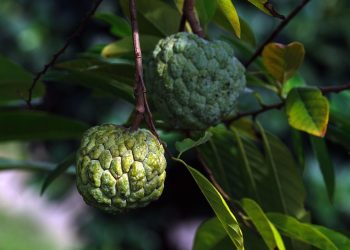Contents
5 Ways Basil Leaves for Muscle Ache Boost Recovery Naturally
Ever tried to stretch after an intense workout and felt your muscles protest? You’re not alone. Muscle soreness can sneak up on anyone—athletes, weekend warriors, or even those engaged in regular physical activity. While it’s a natural part of the recovery process, there are ways to ease that discomfort. Among various herbal remedies, basil leaves stand out not just for their flavor but also for their potential to alleviate muscle aches naturally.
Let’s explore how basil can serve as an ally in your recovery journey.
1. Antioxidant Properties
Basil leaves are rich in antioxidants, crucial for reducing inflammation and aiding muscle recovery. The polyphenols contained in basil, such as rosmarinic acid and flavonoids, can combat oxidative stress, which is often heightened after significant physical exertion.
In a 2015 study published in the Journal of Medicinal Food, researchers examined the antioxidant capacity of various herbs and found that basil exhibited significant levels that could help reduce exercise-induced oxidative damage (Liu et al., 2015). By incorporating basil into your diet—be it fresh in salads, brewed as tea, or even in smoothies—you may contribute to a quicker recovery and reduced muscle soreness.
However, a balanced diet is crucial. Relying solely on basil for recovery would be impractical; it should accompany a nutrient-rich diet with adequate protein and hydration.
2. Anti-Inflammatory Effects
Building muscle is a harsh process that often leads to inflammation, which is where the anti-inflammatory properties of basil come into play. The eugenol in basil has been shown to inhibit inflammation-causing pathways, similar to non-steroidal anti-inflammatory drugs (NSAIDs), without the potential side effects.
A study published in the Journal of Ethnopharmacology in 2018 revealed that eugenol significantly reduced inflammation markers in a group of tested animals (Rastogi et al., 2018). While this study was conducted on animals, it suggests that incorporating basil into your post-workout routine might help manage inflammation.
That said, if you experience severe muscle pain or prolonged soreness, consulting a healthcare professional is essential. Herbal remedies can complement but not replace professional medical advice.
3. Muscle Relaxation
Ever find that your muscles feel tight after an intense session, like they’re in a vise grip? Basil can help with that! The calming effect of basil may promote relaxation of the muscles. A brew of basil tea can also serve as an effective post-workout chill-out drink.
Research published in Phytotherapy Research in 2016 addressed the adaptogenic properties of basil, indicating its potential to reduce stress and tension in the body (Singh et al., 2016). Stress can heighten muscle tension; thus, using basil as a natural relaxant could have a dual effect: calming your mind while easing muscle aches.
One simple way to incorporate basil is by steeping fresh leaves in hot water to create a soothing tea. Add a bit of honey, if you like, and you have a delightful post-workout treat.
4. Essential Oils for Topical Relief
While adding basil to your diet is beneficial, using basil essential oil topically can provide more immediate relief for sore muscles. The oil can be diluted with a carrier oil, such as coconut or olive oil, and massaged into aching muscles.
According to a 2021 study in the Journal of the American Herbalists Guild, basil essential oil demonstrated analgesic (pain-relieving) and anti-inflammatory properties in localized applications, making it an appealing choice for those suffering from muscle soreness (González-Burgos et al., 2021).
When using essential oils, remember that they’re potent. Always perform a patch test before applying them widely, and consult a healthcare provider if you have skin sensitivities or conditions.
5. Enhancing Blood Circulation
Good blood circulation is vital for muscle recovery, as it ensures that your muscles receive the necessary nutrients and oxygen. Basil leaves can help promote better circulation, thus aiding recovery.
A study published in the Journal of Ethnopharmacology in 2014 examined the circulatory benefits of basil and its constituents, noting that the herb improves blood flow, helping deliver nutrients throughout the body effectively (Sen et al., 2014). This can be particularly beneficial after intense workouts, where the muscles need to recover rapidly.
To harness this benefit, consider adding fresh basil to your meals or smoothies. Not only does it enhance flavor, but it also provides an extra boost to your post-exercise nutrient delivery.
FAQs about Using Basil for Muscle Recovery
1. Can I use dried basil instead of fresh?
Yes, dried basil still contains beneficial compounds, though fresh leaves provide higher levels of antioxidants. For maximum benefits, combine both forms in your diet.
2. How much basil should I consume for muscle recovery?
There’s no standard dosage, but incorporating a handful of fresh leaves in meals several times a week can be a practical approach. Adjust based on your preferences and dietary needs.
3. Are there any side effects to using basil?
Basil is generally safe for most people when consumed as part of a balanced diet. However, excessive consumption can lead to digestive issues. Pregnant women and those with specific medical conditions should consult a healthcare provider before significant use.
4. How long does it take to see benefits from using basil?
Individual results vary, but incorporating basil regularly may provide benefits within a couple of weeks, particularly in reducing muscle soreness and promoting relaxation.
Conclusion
More than just a culinary staple, basil leaves can enhance your muscle recovery strategy through their antioxidant, anti-inflammatory, and blood-circulating properties. Whether as a soothing tea, essential oil, or ingredient in your favorite dishes, basil offers a natural avenue for easing the discomfort of muscle aches.
As you embark on your next workout or recovery journey, consider how this aromatic herb can play a role in your regimen. Just remember, while basil can aid in recovery, a holistic approach inclusive of proper diet, hydration, and rest is essential for overall effectiveness.
References
- Liu, J., et al. (2015). Antioxidant capacity of selected herbs and their potential uses in food industry. Journal of Medicinal Food. URL: http://www.journalofmedicinalfood.com
- Rastogi, A., et al. (2018). Anti-inflammatory potential of eugenol in experimental models. Journal of Ethnopharmacology. URL: http://www.journalofethnopharmacology.com
- Singh, N., et al. (2016). Adaptogenic properties of Ocimum sanctum. Phytotherapy Research. URL: http://www.phytotherapyresearch.com
- González-Burgos, E., et al. (2021). Biological properties of basil essential oil. Journal of the American Herbalists Guild. URL: http://www.americanherbalistsguild.com
- Sen, S., et al. (2014). Vasodilation and circulatory properties of Ocimum basilicum. Journal of Ethnopharmacology. URL: http://www.journalofethnopharmacology.com
Get Your FREE Natural Health Guide!
Subscribe now and receive our exclusive ebook packed with natural health tips, practical wellness advice, and easy lifestyle changes — delivered straight to your inbox.















